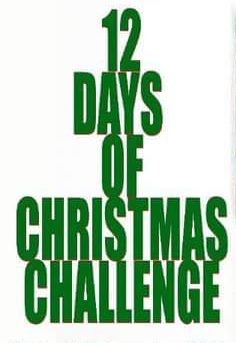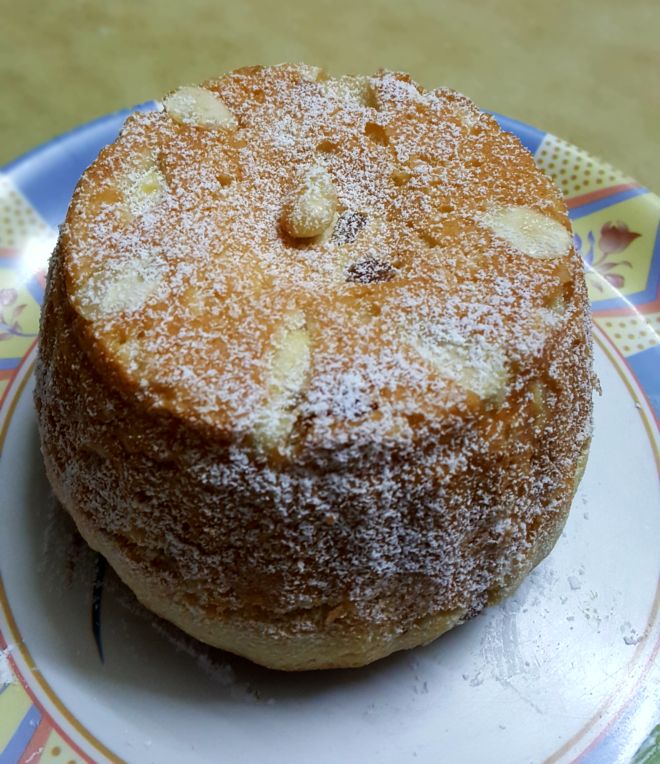A recap of an enjoyable fitness event which was one among the highlights of a mostly dull year. With the pandemic looming large, running races and all public sporting activities had come to an end (and continue to be so for the indefinite future). As a marathoner tailoring my workouts, running schedules and other fitness activities according to the year’s race calendar, 2020 proved to be a solitary adventure of home workouts and outdoor exercises with caution. Besides an athlete’s individual training – and a few “virtual” races doing the rounds – there was not much to look forward to in terms of community activity.
Amidst all the turmoil in a year without meeting fellow runners, an interesting virtual event caught my eye. Combined with a friend egging me on to participate, I took up the endeavor titled “12 days of Christmas Challenge” by the Mumbai Road Runners (MRR) – a city-wide running community based in Mumbai, India that had posted its fun-filled fitness challenge on Facebook. Running from the 25th of December to the 5th of January, the Christmas challenge was an innovative take on the popular carol, focusing on health in festive fervor. Participants had to run or engage in any fitness activity for each of the twelve days, attired in the colors of Christmas or anything festive for every workout. A picture or two of your exercise for the day, along with a description of what was done and the benefits of that particular routine, and insights into your choice of workout gear for the day, had to be shared daily with the MRR admin team and fellow participants.
All local guidelines with due consideration to COVID had to be adhered to – either exercise indoors, or run/walk/cycle outdoors with the required precautions in place. Here’s what my version of the 12 Days of Christmas Challenge looked like.
Day 1 – Celebrated Christmas with the entire Pilates family. Brought together for a house Christmas party, around sixty of us Pilates teachers gathered from around the world, across different time zones, for an afternoon/evening/night of Barre workouts, karaoke aerobics, storytelling, poetry reading, carol singing and more. A celebration of health and fitness, and all the things we have and are grateful for. We began with Barre – a hybrid dance-strength workout, focusing primarily on lower body and core, and combined it with karaoke aerobics that involves singing along with dancing; a high intensity cardio routine all the way. The dress code for the “party” was holiday colors and anything festive to work out in. A joyous start to the festive season.
Day 2 – On the second day of Christmas my true love gave to me… No turtle doves, but I did get a customized Santa Running tee. It’s truly special when your people know you. More so when it’s from non-runners who understand the things that are important to you. Not the fastest, not the fittest, but always showing up and giving one’s best. My workout for the day was a modest 5k to try out the new tee.
Day 3 – Strength training in elfin colors. Santa’s little helpers need to be strong enough for making toys and taking care of the reindeer. The workout comprised a Chest-Shoulders-Triceps weight training routine. 4 exercises for chest, 4 for shoulders, 3 for triceps; 3 sets, 15 reps each.
Day 4 – I received another customized tee for Christmas, and it was dri-fit too! Eat and run seemed to be the idea. As the baking team decided on a menu to honor the tee, the day was dedicated to Christmas sweets with candy-colored tights. Guava cheese, marzipan, frosted cookies, gingerbread houses, fudge, chocolate rolls, rum balls and toffees – bright, vividly cheerful colors to resonate with the festive season. Workout of the day: Yoga – a Vinyasa flow specifically focusing on lower body strength, balance, mobility and flexibility.
Day 5 – Lessons from Rudolph: Don’t let anyone dim your light, simply because it’s shining in their eyes. Shine on, and light the way ahead. Another strength routine with Back-Biceps weight training. 5 back exercises, 3 bicep exercises – 3 sets, 20 reps for each exercise. And an hour on the road. (Fun fact: Male reindeer drop their antlers in winter, which only grow back in spring. Female reindeer keep their antlers all through winter. Hence, Santa’s reindeer are all female.)
Day 6 – A wheely Wednesday halfway through the MRR Christmas Challenge, as we prepared to roll out of an old year and usher in a new one on a clear slate. White is the color of snowy landscapes, frosting on cookies and gingerbread houses, snowflakes and stars dotting a dark night, red’s steady companion on stockings, candy canes and Santa’s cap. Workout of the day: An hour on the wheel, comprising a full body workout focusing on upper-lower body strength and stability, and right-left coordination and balance.
Day 7 – Cardio day in yellow! The color of shining stars, glowing string lights, and cheery festive decor. Optimism, hope and faith as we let go of the old year and step into a new one. Half an hour on the road + 45 minutes kickboxing to build endurance.
Day 8 – Core day in a red-green combo of the colors of Christmas holly, wreath, mistletoe, elf costumes. The workout for the day was high intensity endurance plus strength – 200 skips+20 push ups X 10 (10 variations each of skipping and push ups for 10 rounds) = 2000 skips+200 push ups; 3-minute burpees X 5 rounds; 5 variations of sliders – 20 reps each.
Day 9 – Leg day in red. With Santaland having just passed by and an upcoming ruby anniversary, it’ was an overkill of red! Holly berries, Santa’s cap, St. Nicholas’ robes, stockings, candy canes, candles, the very color of love and joy – What’s Christmas without red? Lower body strength training to power up the big muscle groups: Quadriceps – 4 exercises (2 sets, 20 reps each); Hamstrings – 2 exercises (4 sets, 20 reps each); Calves – 3 exercises (2 sets, 20 reps each); Abductor and Adductor – 1 exercise for each (2 sets, 20 reps).
Day 10 – Odissi dance practice in shades of green. From dark green Christmas trees to shiny green baubles, light foliage of holly leaves and glittery green wreaths, green is an integral color of Christmastime. And how can one not dance in a season of merriment and festivity? I did an hour of Odissi dance including conditioning exercises, basic steppings, a pallavi and an abhinaya. A day of strength, endurance, flexibility, balance – classical dance is an all-encompassing workout.
Day 11 – A simple run in green and white. Snowflakes on Christmas trees, green ribbons on white candles, green wreaths on white walls, white snowmen on green trees, green tinsel on white trees. Green and white are colors of contrast – while white symbolizes dormancy at wintertime, green represents vibrancy and new life in spring. Workout of the day: An hour on the road, along with some home gardening – potting and transplanting a few flowering plants that outgrew their pots. Bending, picking, pulling, shoveling – it’s a tremendous arm workout.
Day 12 – A harlequin day for the finale, dedicated to all the colors of Christmas. White snowmen, green trees, red holly berries, silver bells, golden stars, brown reindeer, blue tinsel, purple string lights – a riot of colors that bring together the festive season. Core training with 45 minutes of Pilates, and a quick, short 3k. Just as Christmas is made up of an assortment of colors, a strong core brings together all kinds of workouts and keeps the body injury free.
To bring an end to the initiative that also marks the end of the Christmas season with the feast of Epiphany, a collage of the 12 days of Christmas Challenge had to be created on completion of the twelve days, alongside a summary of the event’s activities.
1-Barre + Karaoke aerobics
2-Run
3-Chest-shoulders-triceps weight training
4-Yoga
5-Back-biceps weight training + Run
6-Wheel workout
7-Kickboxing
8-Skipping + Burpees + Sliders + Walk
9-Lower body strength training
10-Odissi dance
11-Run
12-Pilates + walk
All in all, a creative and fun fitness challenge, associating Christmas with our daily workouts, keeping mind, body and spirit in good health. Until next year!
Successfully completed the 12 Days of Christmas Challenge!























